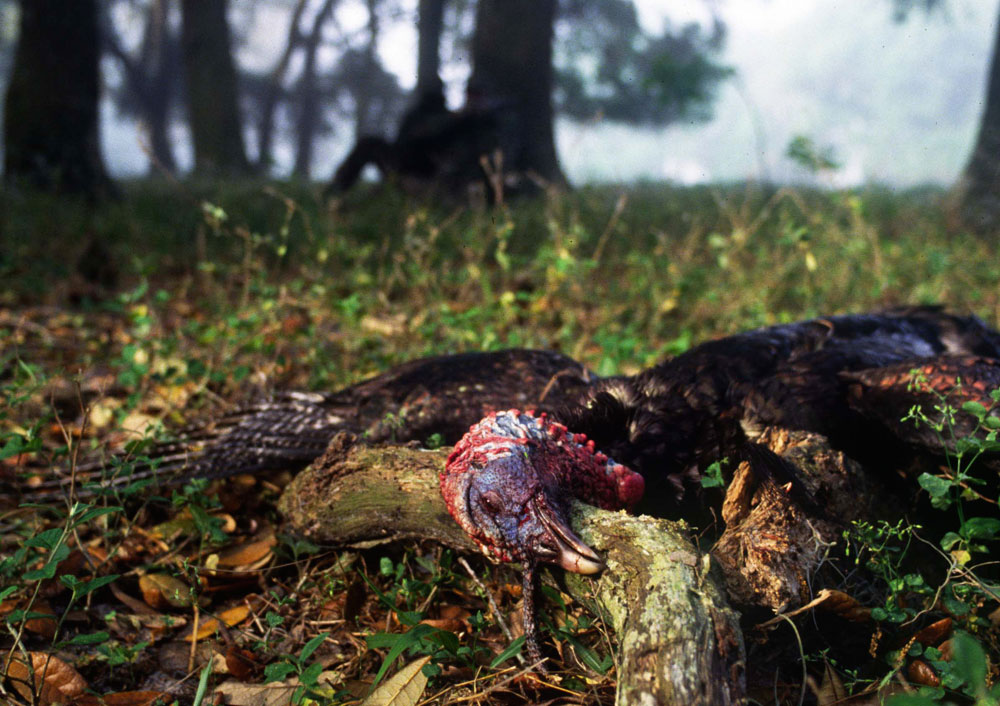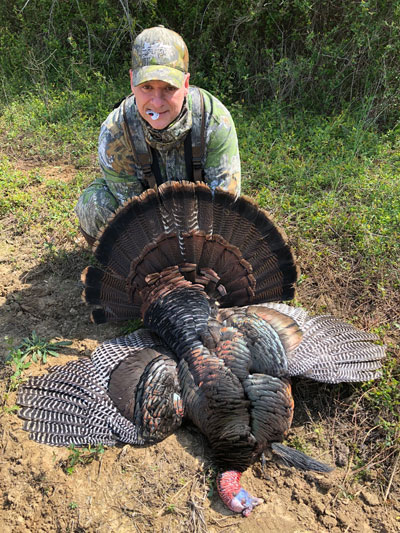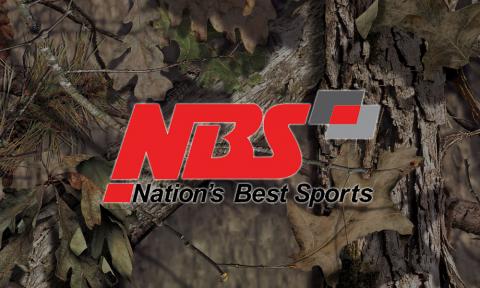provided by John Phillips
Turkey hunters usually follow a progression as they mature and save their money. The first thing they want to do is take turkeys. Next, they try to call up their own turkeys and take them. Then they hunt and take several gobblers where they live. Their next goal often is to go out of state and take a species of turkey they’ve never hunted before. The last great challenge is to take a Grand Slam of all the species of turkeys in the U.S., with the toughest-to-take turkey being the Osceola gobbler, due to his very limited terrain in Florida. Most of the property where he lives is privately held, and the public land that’s available is often crowded. However, Mossy Oak Pro Shane Martinez of Sebring, Florida, is a master of taking Osceolas on public lands. Martinez shares his strategies for finding and taking these elusive gobblers.

Florida’s Lake George WMA is made up of 39,000 acres of primarily mixed hardwood swamps and pine flatwoods and besides Osceola turkeys, has the Florida black bear, Sherman's fox squirrel, the gopher tortoise and bald eagles living there. My plan for hunting this region is to drive the roads, look for signs and use a crow call to attempt to get a turkey to gobble. If I hear one gobble, I’ll know there are birds in this section of the WMA, and I’ll mark that spot with either my onX map or my onX Hunting App.
I’ve discovered a couple of places on Lake George WMA with some cypress swamps and some fairly open areas where I’ve located gobblers before. That’s probably where we’ll start our hunt. Lake George WMA is so big, I can sit on one end of it and not see the other end of the lake. There are numbers of palmetto flats there and some swampy and sandy pine areas. I’ll be wearing thigh-high Muck boots because there will be some water, and you never know how deep that water may be in a place you intend to hunt. I know many people prefer to wear snake boots, since the temperatures will be warming up, and the rattlesnakes and the cottonmouths probably will be out and about.
 I’ve often been asked, “How do the turkeys deal with the water? Will they walk across it or fly across it?” From my experience, I’ve learned that if I can find a cypress swamp or a bay head swamp, nine times out of ten, that’s where the turkeys will roost. Many times the turkeys - when they’re ready to fly down - will drop straight down and land beneath the tree where they’ve roosted, although sometimes they’ll pitch out of a tree and land 40 or 50 yards from where they’ve roosted.
I’ve often been asked, “How do the turkeys deal with the water? Will they walk across it or fly across it?” From my experience, I’ve learned that if I can find a cypress swamp or a bay head swamp, nine times out of ten, that’s where the turkeys will roost. Many times the turkeys - when they’re ready to fly down - will drop straight down and land beneath the tree where they’ve roosted, although sometimes they’ll pitch out of a tree and land 40 or 50 yards from where they’ve roosted.
Another thing I’ve noticed, as a general rule, is that the Osceola gobbler likes to leave the roost with the sun at his back - perhaps so he can see the forest floor in front of him and try and detect any danger that may be there. Oftentimes a smart Eastern turkey will stay in a tree and gobble until he spots hens. However, I’ve observed that these Florida birds often will fly down in the dark and start strutting and drumming before dawn.
Just before legal shooting light, you can see objects silhouetted in that pre-dawn light. I’ve watched before as gobblers have strutted close to me, and I’ve had to wait two or three minutes before I legally could try to harvest them. I’ve never seen an Osceola gobbler fly from his roost and land in water. But I won’t be surprised if they do. These Osceola birds seem to have no problem wading in relatively shallow water to get to where they want to go.
For more information about hunting Osceolas in Florida, visit: https://myfwc.com/hunting/turkey/get-started/safe-hunt/ and https://myfwc.com/hunting/turkey/.




























